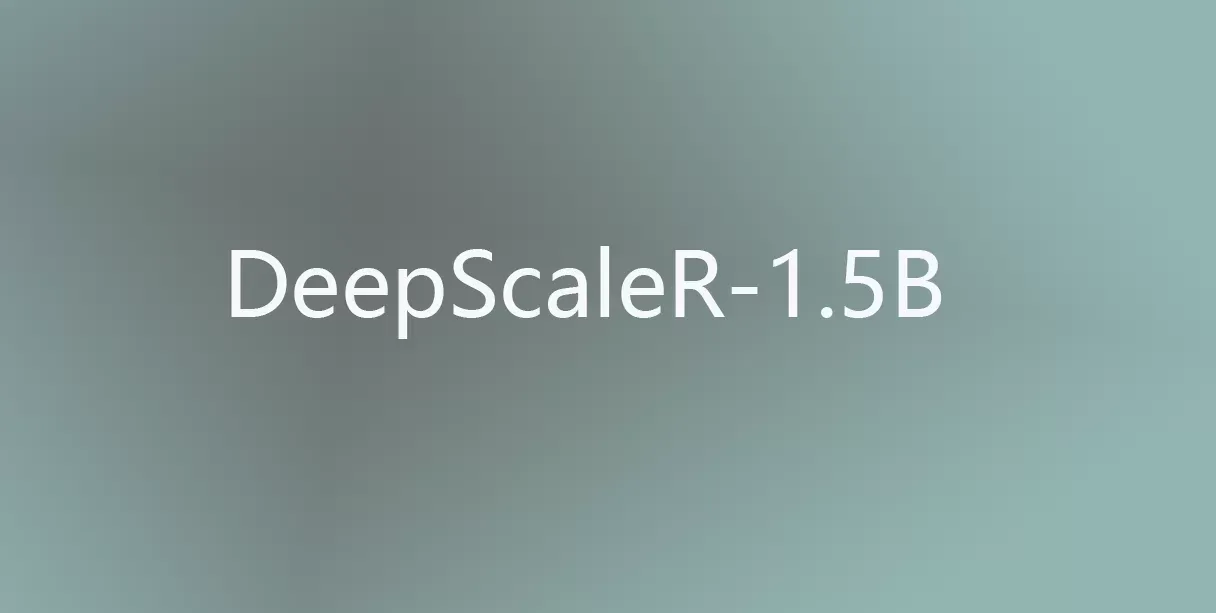Run DeepScaleR 1.5B on Linux : Step by Step Installation Guide

DeepScaleR-1.5B-Preview represents a fully open-source, 1.5 billion-parameter transformer model, optimized through Reinforcement Learning (RL) to surpass OpenAI's o1-preview in mathematical reasoning tasks.
System Requirements
Prior to installation, verify that your computational environment satisfies the following specifications:
Hardware Specifications
- Processor: Modern x86_64 CPU with AVX-512 or AVX2 instruction support for computational efficiency.
- Memory: A minimum of 8GB RAM; larger models necessitate additional memory.
- Storage: Adequate disk space to accommodate model weights and dependencies.
- GPU Acceleration (Optional): NVIDIA or AMD GPUs to expedite model inference.
Software Dependencies
- Operating System: Linux distribution such as Ubuntu, Debian, or Fedora.
- Essential Packages:
git(for repository management)- C++ compiler (GCC or Clang)
make(build automation tool)- Python (version 3.6 or later) with
pip - CUDA Toolkit (for NVIDIA GPU acceleration)
- ROCm (for AMD GPU compatibility)
- Ollama (for efficient model execution)
Installation Procedure
1. Compilation of llama.cpp
llama.cpp facilitates the efficient execution of large-scale language models.
For macOS and Linux (via Homebrew):
brew install llama.cpp
Manual Compilation:
git clone https://github.com/ggerganov/llama.cpp
cd llama.cpp
make
Compiling with Hardware-Specific Optimizations:
LLAMA_CUDA=1 make # NVIDIA GPU acceleration
LLAMA_ROCM=1 make # AMD ROCm support
LLAMA_OPENCL=1 make # OpenCL optimization
LLAMA_AVX512=1 make # AVX-512 instruction set
2. Acquisition of the DeepScaleR 1.5B Model
Obtain the GGUF-formatted model from Hugging Face:
wget https://huggingface.co/NikolayKozloff/DeepScaleR-1.5B-Preview-Q8_0-GGUF/resolve/main/deepscaler-1.5b-preview-q8_0.gguf
3. Executing DeepScaleR 1.5B via llama.cpp
Command-Line Interface (CLI) Execution:
./llama-cli --model deepscaler-1.5b-preview-q8_0.gguf -p "Derive the Taylor series expansion for sin(x)"
Server Deployment:
./llama-server --model deepscaler-1.5b-preview-q8_0.gguf -c 2048
To query the server via API:
curl http://localhost:8080/completion -H "Content-Type: application/json" -d '{
"prompt": "Explain the laws of thermodynamics",
"n_predict": 128
}'
4. Deployment via Ollama
Ollama Installation:
curl -fsSL https://ollama.com/install.sh | sh
Executing DeepScaleR within Ollama:
ollama run deepscaler-1.5b-preview-q8_0.gguf
Practical Implementations
Sentiment Analysis via DeepScaleR
import requests
def analyze_sentiment(prompt):
url = "http://localhost:8080/completion"
data = {"prompt": prompt, "n_predict": 128}
response = requests.post(url, json=data)
return response.json()
print(analyze_sentiment("The economic outlook appears promising."))
Code Synthesis with DeepScaleR
import requests
def generate_code(prompt):
url = "http://localhost:8080/completion"
data = {"prompt": prompt, "n_predict": 128}
response = requests.post(url, json=data)
return response.json()
print(generate_code("Implement a binary search algorithm in Python."))
Chatbot Implementation Using DeepScaleR
import requests
def chatbot_response(user_input):
url = "http://localhost:8080/completion"
data = {"prompt": user_input, "n_predict": 128}
response = requests.post(url, json=data)
return response.json()
while True:
user_input = input("User: ")
if user_input.lower() == "exit":
break
response = chatbot_response(user_input)
print("Bot:", response)
Optimization Strategies
- Model Quantization: Utilizing compressed model formats (e.g., Q8_0) to reduce memory footprint.
- GPU Acceleration: Ensuring appropriate CUDA or ROCm configurations for optimized performance.
- Context Window Adjustments: Modifying
-cvalues to align with system capabilities. - Batch Processing: Adjusting batch sizes to enhance throughput while mitigating latency.
- CPU-Specific Enhancements:
- Enabling AVX-512 and AVX2 during compilation for performance gains.
- Implementing multi-threading using
-tparameter for parallel processing.
- Memory Optimization:
- Allocating sufficient swap space to mitigate memory constraints.
- Terminating unnecessary background processes to free up system resources.
Troubleshooting Guide
- Dependency Issues: Confirm installation of prerequisites (Git, GCC/Clang, Python, CUDA, ROCm).
- Compilation Failures: Validate compiler flags and hardware compatibility.
- Memory Overflows: Reduce the context length or utilize a lower-precision model.
- Performance Bottlenecks: Leverage hardware acceleration and optimize resource allocation.
Conclusion
DeepScaleR 1.5B is a state-of-the-art transformer model that can be seamlessly deployed on Linux platforms via llama.cpp and Ollama.
By adhering to this comprehensive setup and optimization guide, researchers and engineers can harness DeepScaleR’s capabilities for advanced natural language processing applications, ensuring high-performance inference and computational efficiency.